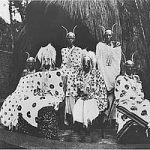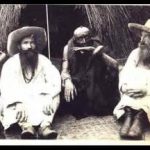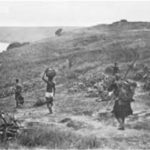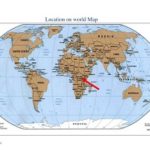The Subsequent Events And Coclusion
After the violence, on 10th November 1959, the Belgian administration announced profound structural changes which were published on 25thDecember 1959. These introduced a constitutional monarchy, general elections and the separation of administrative and judicial powers. The first communalelections were to be held in June 1960. The leaders of Unar who were abroad gave instructions to their followers to boycot the elections. 25 per cent abstained from voting and this election resulted in the Parmehutu obtaining 70 percent of the votes cast or 50 per cent of the registered votes.
The other party, Aprosoma, also appealing to Hutu, obtained 5 per cent of the votes. Although this election gave the Parmehutu a very strong ( 7 0 per cent) representation on the councils of the subchiefs, who were henceforth to be called burgomasters, at the same time it demonstrated that a substantial numberof Hutu had not supported their leaders. This was especially evident in Central Rwanda. During the following months of 1960, the killing of Tutsi, the burning of their huts and plantations and expelling them from their homes occurred on a considerable scale in three out of four districts of Central Rwanda – Astrida, Kigali and-Nyanza (U.N. report A. 4706). This resulted in another exodus of at least 135,000 people (U.N, report 5126 p.55). At the end of 1960 the General Assembly of the U.N. passed a resolution postponing the date of the general elections and the referendum on the king, which were to have been held in January, 1961, to a later date. On the 28th January, 1961, during a convocation of all the burgomasters and their councillors at Gitarama a coup d’Etat took place. The monarchy was abolished and a republic proclaimed. The meeting elected a president with a legislative council, consisting of forty four members all of whom were Hutu.
On the same day the president presented his cabinet of ten ministers who were exclusively Hutu. A week later on 6th February, the Belgian Government formally recognized the new- Rwanda Government. The U.N, however declared the government “to have been established by irregular and unlawful means and not to be regarded as fully representative of all segments of thepopulation in the absence of free elections” (.U-.N. Report A. 4994 p.25). It further recommended,
(a) the holding of elections and a referendum on the monarchy in August 1961 under U.N. supervision.
(b) a full and unconditional amnesty so as to enable political leaders who were in exile or imprisoned to resume normal political activities.
(c) the return and rehabilitation of refugees. It noted moreover “with regret that the administeringauthority has arbitrarily suspended the powers of the Mwami of Rwanda and has not allowed him to return”. A further request was made to the administering authority of thetrusteeship “to facilitate his return to Rwanda”. (Resolutions 1579 and 1580 Dec. A. 49994 P-8).
However the elections were presented by the Hutu leaders as the final contest in which they still might lose everything
The amnesty was granted but neither the Mwami nor the refugees were able to return. The republican flag continued to fly from all the public buildings all over the country. During the period immediately preceding the elections, violence again erupted resulting in another stream of refugees. ” 90per cent of the refugees were members of the Unar party” (U.N. report A. 4994 p.8 6 ). It was in these disturbed conditions that the general elections and the referendum took place. Parmehutu obtained 77 per cent of the votes while Unar obtained 17 per cent. 80 per cent rejected both the person of Kigeri Vand the monarchy. The republic was proclaimed.
During the subsequent years several armed attempts to return were made by the refugees. These attempts resulted in extremely violent reprisals against Tutsi who had stayed in Rwanda. As a result thousands perished and still more fled the country.
We have set out to demonstrate that the conflict which has “been described and analysed in the previous chapters cannot be understood unless it is seen in relation to the Rwanda traditional social system and the impact of western influences on the principles of social organization of Rwanda society. It has not been our intention to analyse all the factors which constitute the sum total of what could be called western influences but to indicate and analyse demonstrable changes in the Rwanda social system due to the presence of western authority in Rwanda.
The impact of these changes could not be measured unless the traditional Rwanda social system was first described and analysed. For this a cross-section in the diachronic development of Rwanda society was taken at the period around 1900 when the Rwanda social system came under the influence of new opportunities and pressures and became subject of an external authority. We have analysed the changes that took place in the social system and have pointed out correlations between certain characteristics of the traditional social system, the impact of western authority on it and the conflict situation that arose, at the moment of independence from colonial rule.
The conflict itself fits closely Coser’s definition of conflict as “a struggle over values and claims to scarce resources in which the aim of the opponents are to neutralise, injure or eliminate their rivals.” Conflict is focussed on the removal of opposition. A twofold conflict situation had arisen, one concerning Rwanda as a whole and the other concerning the peripheral areas and central Rwanda. As regards Rwanda as a whole the king was traditionally both the focus and the apex of the Rwanda social system. His position was upheld and given value in myth and his transcendental kingship was expressed in unifying ritual.
Struggle for the kingship was kept within the bounds of personal challenges and did not develop into a strugglefor independence from it. We have analysed in some detail the importance of the Mwami’s position in relation to the overall cohesion of Rwanda society and have examined how this important principle of social cohesion lost its effectiveness. The kingship had been emptied of those elements making for unity and no longer constituted a symbol of Rwanda or of the well-being of its people. On the level of delegated power, the whole complex of social relationships tended towards the preservation of political power and its concomitant economic benefits within the confines of a relatively few noble futsi lineages.
We have analysed the mechanisms of the principles of social organisation which led the struggle for power positions within the important tutsi lineages to be dissipated into dependence on locally based support, and in this way resulted in locally based solidarity. Equally within these locally based groups of people political, military and socio-economic institutions provided avenues for the redress of personal grievances and channels for effective pressure on the political authorities.
Moreover the system provided for some participation in the lower echelons of the political hierarchy by Hutu land-chiefs and the absorption of possible challengers through the process of enoblement. In our diachronic analysis we have demonstrated how these principles of social organisation were taken out of the system while on the other hand political power positions were exclusively granted to members of the traditional noble lineages.
By extension access to wealth, resulting from educational achievement, was reserved by the authorities to members of the same important lineages.
The “traditional system had been emptied of its channelsfor exerting pressure and of its avenues for political competition while no new competitive institutions, modelled on a democratic basis, had been created. A situation had developed in which challengers or would-be competitors who did not belong to the important Tutsi lineages had no mechanisms at their disposal through which they couldmanipulate individual or locally based grievances for the successful achievement of their own aspirations. The removal of these principles of social organisation which, through a variety of channels, kept aspirations of a political nature at a personal or locally based group level, forced them to manipulate grievances and aspirations ,in the wider context of an attempt to change the whole system. Since the system could now only be collectively attached and the privileged selection on which it was based could be expressed in ethnic terms, they were forced into a numerically based appeal to a wider group formulated in ethnic terms.
The actual incidence of events, as we have shown in ourprevious chapter, resulted in the formulation of appeals for group solidarity in ethnic terms. The analysis has also shown how response to the leaders’appeals was also expressed in ethnic terms and moreover could no longer be dissipated through traditional channels. It therefore resulted in group solidarity at a national level on an ethnic basis. The formulation of appeals for group solidarity in ethnic terms and the response of actual ethnic group solidarity cannot he understood unless they are seen in relation to the traditional Rwanda social system.
Thus, when, through the educational system, challengersand competitors appeared, a latent conflict situation arose in that educated Hutu found themselves barred from competition and in order to reach their goal they had to eliminate the system. Issues became formulated in mutually exclusive terms in that continuation of the status quo, despite promised reforms, could be presented as an irrevocable elimination of the Hutu leaders from participation in political power and from access to wealth through education.
On the other hand participation based on ethnic support of the Hutu would mean the virtual elimination from the political scene of those who had hitherto held the positions of power.
A second and additional conflict situation had arisen as regards the peripheral areas in their relations with central Rwanda. Despite its classification as a state with centralised monarchical authority, Rwanda contained very definite regional variations of an ecological, demographic, political, socio-economic, religious and historical nature. The people themselves were conscious of these variations and expressed strong local loyalties.
This point is demonstrated by the successful resistance against attempts to absorb them into a social system not their own. The developmental analysis has shown how incorporation of peripheral areas into the political system of central Rwanda was enforced by the German and later the Belgian authorities and how this had a wider socio-economic impact. Initial continued resistance against these absorbing centripetal pressures from central Rwanda was forcibly overruled by the colonising and later administering authorities.
Here we have a latent conflict situation in that the intrudin, political authorities in these areas, in reaching their goal, were in the process of eliminating indigenous claims to scarce status, power and resources in the form of land.
Redress of this situation could only be obtained by the removal of these authorities. As we have seen by 1959 no democratic channels existed to effect this redress and the situation continued only as a result of its being instituted and upheld by the force of the administering authorities.
Exterior force will more easily contain a latent conflict situation and prevent it from turning into open conflict if, on the one hand, it continues to show support for the party which is challenged while on the other hand the challengers do not see the actual situation as irreversible and are therefore not prompted to take action by the need for an immediate solution. In 1959 both these elements for containment of the latent conflict situation had disappeared.
The Tutsi aristocracy had fallen out of favour withthe administering authorities and the Church. On the other hand the Unar demand for self-government in 1960, set conditions for an immediate reaching of the goals set by the Hutu leaders. The time constraint demanded an immediate reversal while no democratic channels existed to effect this reversal. The factors hitherto preventing the latent conflict situation from turning into an open conflict no longer existed either in Rwanda as a whole or in the peripheral areas. The conflict started where those twoconflict situations coincided.
Appendix
⦁ Council of the chief
It comprised, next to the chief, at least ten and not more than eighteen members. These were chosen as follows: five to nine members were chosen by the subchiefs and an equal number chosen from among the other members of the chiefdom. These latter were chosen as follows: each council appointed three members who together formed the electoral collegewhich chose from among its members the remaining councillors to the chief.
- Council of the Province
It comprised (a) all the chiefs and, (b) an equal number of subchiefs elected by the subchiefs, and (c) a number of others equal to that of the number of chiefs and subchiefs combined. This last group (c) was to be elected as follows: each council of the chiefs chose from among its members three members who together formed the electoral college which in turn chose from among its members the remaining councillors of the provincial council.
3.TheCouncil of the King
It comprised the king and (b) the ten chiefs of the provinces, and (c) six members elected by and from among the chiefs and (d) one representative for each of the ten provincial councils elected by and from among its members and (e) eight more members co-opted by the members of the Supreme Council.





